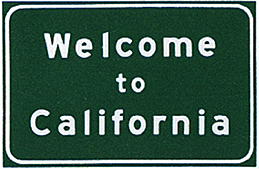
The most fearful of monsters is a well-known friend, slightly altered.
Kobe Abe
The Face of Another

In 1982 I began to photograph the Century Freeway Corridor in Los Angeles. Initially, I had no idea what was taking place on this swath of land. I only wanted to capture the sense of "abandoned suburbia" I saw and felt. As such, In Our Path began as a very personal response to home and environment. However, it soon took on different and broader meanings.
As I photographed I became acquainted with the history of this public project and with the people who lived within and along the Corridor. I also began to meet those who were building the freeway as well as those responsible for carrying out the stipulations of the court's Final Consent Decree.
Upon completion of my work in 1983 In Our Path was exhibited at the Downey Museum of Art, located next to the Corridor. I organized a symposium on Artists and Public Issues which brought together residents of the community, local government officials, artists, and freeway administrators to discuss public land use and the role artists could play in such projects. In 1984 I received a National Endowment for the Arts Fellowship for this first series of photographs of the freeway project. And in 1989 this work was shown at the Dia Foundation in New York City as part of its exhibition and dialogue on community: If You Lived Here.
Originally scheduled to be completed by 1980, the Century Freeway finally opened in October of 1993. In 1990, after seeing In Our Path, Hall & Associates (the successor to the Center for Law in the Public Interest in the Century Freeway litigation and the firm which represented home owners in this case) commissioned me to rephotograph the freeway. I returned to the Corridor to see the changes that had occurred since I last photographed there and began to document the physical transformations as well as the effects of the court's Final Consent Decree.
In March 1995 both my early photographs and these new images were exhibited simultaneously at two sites near both ends of the now-completed freeway. In addition to returning to the Downey Museum of Art, In Our Path was shown at El Camino College in Torrance. Each site was linked to the other via the Internet, where exhibit participants and those who were affected by this public works project were asked to share their own stories of the Century Freeway.
In 2007 The Huntington Library in San Marino, California added this work to their collection. It is a fitting home for these photographs as the Huntington is an archive of Southern California history and photography. In June 2008 In Our Path will be included in an exhibition at the Huntington on the history of Los Angeles Photography entitled This Side of Paradise: Body and Landscape in L.A.
In Our Path (both the photographs and this Web site) could not have been completed without the help and support of many friends, colleagues and those who were connected with the building of the Century Freeway. To them I offer my thanks.
In the years since beginning this work I've learned that complicated issues surrounding public works projects such as this are not easily defined by simple statements (visual or otherwise). The attitudes of everyone affected by this project, from residents to officials who administered the court-mandated programs to those who built the highway, are as varied as the number of people involved. The truth of the Century Freeway is an interwoven fabric of stories, mine being merely one thread. Feel free to add your voice in the comment section that appears on each essay and photograph page.
Jeff Gates
March 2008